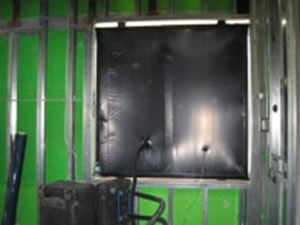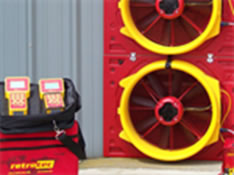Air Infiltration/Exfiltration
Air Infiltration/Exfiltration
Air Infiltration or Exfiltration Testing Determines the Rate of Air Leakage, Water Resistance, Structural and Forced Entry Performance of Windows and Doors
 Air infiltration or exfiltration testing determines if a series of windows and/or doors – or fenestration products – are weather tight and structurally sound. Every step taken ensures that the products used will meet building design and building codes. A sampling of the tests could include:
Air infiltration or exfiltration testing determines if a series of windows and/or doors – or fenestration products – are weather tight and structurally sound. Every step taken ensures that the products used will meet building design and building codes. A sampling of the tests could include:
- Air filtration is determined by a high precision mass flow meter while the specimen is subjected to a constant air pressure differential.
- For water resistance tests, specimens are checked for water penetration under cyclic and static air pressure, which simulates differing storm conditions.
- Fenestration Testing Laboratory reviews all apparatuses and ensures that all test samples receive the necessary water application at the required test pressure conditions. Fenestration Testing Laboratory uses precise digital instrumentation to measure permanent set and deflection readings under ratios established by the standard. The results determine if water penetration occurs inside the product or wall cavity.
- For the uniform load tests, the specimen’s structural integrity is evaluated while prescribed static high pressure differential is created across the specimen, simulating both positive and negative wind loads.
 The USACE (United States Army Corps of Engineers) has adopted an
The USACE (United States Army Corps of Engineers) has adopted an 